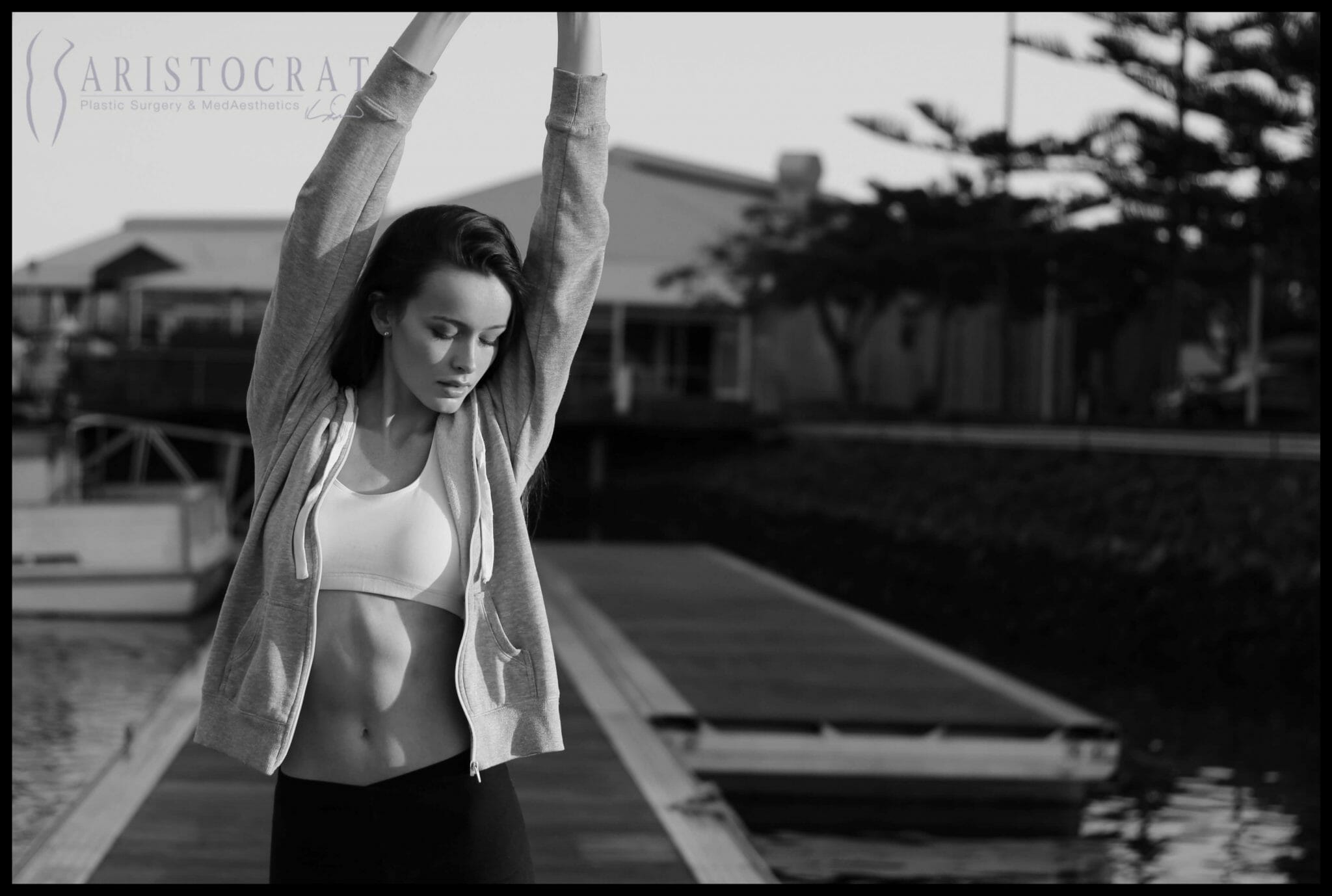How is Plastic Surgery Done? (7 Most Popular Procedures)
Despite the fact that plastic surgery has been around for more than 200 years, many people still have little idea what happens on the surgeon’s table. In this article, we will try to shed some light on how some of the most popular procedures are performed.
The term plastic surgery was coined from the Greek word ‘plastikos’, which means to mould and reshape.
Plastic surgery is a form of surgery that deals with facial and body reconstruction to correct body defects which might be due to burns, diseases, birth disorders and trauma. Plastic surgery can also be carried out to change the looks of a person.
How 7 Most Common Plastic Surgery Procedures Are Performed
Liposuction
Liposuction is a procedure that removes excess fat from stubborn body areas that do not seem to respond to diet or exercise.

What are the steps involved in carrying out liposuction?
- Anaesthesia is administered by the surgeon to make the patient fall asleep during surgery.
- Small, almost invisible incisions are made around the area marked for liposuction.
- A mild form of local anaesthesia is infused into the incisions to reduce bleeding and trauma.
- A thin, hollow metal tube called cannula is inserted through the incisions to dislodge fats by the controlled motion of the cannula.
- Surgical vacuum or syringe attached to the cannula is used to suck out the dislodged fat.
The improved body shape will be noticeable after the swelling as a result of fluid retention has subsided. This usually takes about 3 to 4 days.
Breast Augmentation (With Implants)
Breast augmentation is a procedure that is carried out to enlarge small breasts or restore breast size and shape after pregnancy by using breast implants.
Breast implants are medical prosthetics that are inserted into the breast.

Types of Breast Implants Used
- Saline Implant: an elastomer silicone shell filled with sterilised salt water.
- Silicone gel-filled Implant: a silicone gel contained in a silicone gel “shell”. Patients who choose to have silicone gel implants in their breasts need to undergo magnetic resonance imaging or ultrasound scan regularly to check the condition of the implants.
- Alternative composite implants involve the use of other materials like polypropylene string, soy oil, or other materials as implants. We do not use these types of implants in our procedures.
How Is Breast Augmentation Done?
- Anaesthesia is administered to make the area under surgery numb to pain. Usually, a combination of local anaesthesia and general anaesthesia is used, depending on the extent of the procedure, patient’s preferences and other factors.
- Incisions are made in any 3 areas of choice, it can be:
- Inframammary incision which is a cut of about 1-2 inches long made underneath the breast in the crest area. This type of incision gives the surgeon enough room to place larger silicone gel implants with a high degree of accuracy in the breast.
- Periareolar incision is a cut made in the areola (the skin around the nipple) region of the breast. This type of incision does not make the scar visible, but it reduces the sensitivity of the nipples.
- Trans-axillary incision is a cut made in the armpit through which implants are inserted into the breast. This is done using an endoscope which is a tool with a camera and surgical instruments at the end. This leaves a visible scar in the armpit. The advantage of this type of cut is that it there’s no scar around the breast region.
- The breast implant is inserted through the incision in two ways:
- Submuscular Placement: the breast implant is implanted in a pocket under the pectoral muscle.
- Sub-mammary Placement: the breast implant is implanted in a pocket above the pectoral muscle, directly behind the mammary tissue.
The incisions made are closed using layered sutures in the breast tissue with sutures. Surgical tape is used to close the cut on the skin.
The method of implantation depends on the type of implant, the size of the implant, body type your surgeon’s recommendations.
Breast Lift (without Implants)

Breast lift is a surgical procedure that removes stretched-out skin and also reshapes the breast tissue and repositions the nipple and areola to a horizontal-pointing position.
The breast lift is usually carried out to restore the breast shape after pregnancy and breastfeeding to a better shape, make the breast more proportional and youthful through the removal of excess skin from the breast and to give women their desired breast profile.
How Is a Breast Lift Performed?
Techniques used in a breast lift depend on a patient’s breast tissue, excess skin and her expectations for the procedure.
- Anchor Lift: This method is used to correct extensive sagging, giving the breasts an amazing new shape. With this method, a significant amount of skin and saggy tissues can be removed from a patient’s breasts by the surgeon. To carry out this procedure, the surgeon makes three incisions:
- The first incision is made around the edge of the areola
- The second incision is a vertical incision made from the edge of the areola down to the breast crease
- The third incision is a horizontal incision made along the inframammary fold hidden in the breast crease.
- Crescent Lift: This procedure is done on patients to correct minimal sagging. The procedure is often carried out along with breast augmentation. It involves making an incision halfway around the top edge of the areola.
- Periareolar Lift: This procedure is used to correct mild amount of sagging and to reduce the size of the areola. It is usually done along with breast augmentation. The procedure involves making a cut around the edge of the areola.
- Vertical Lift: this is a procedure used to reshape the breasts and also correct moderate sagging. To carry out this procedure, the surgeon makes two incisions:
- The first incision is made around the edge of the areola.
- The second incision is a vertical incision made downward to the inframammary fold from the edge of the areola, creating a lollipop shape with the first incision.
Breast Reduction

Breast reduction is a surgical procedure is used to reduce the size and weight of large, heavy breasts by removal of excess breast tissue, fat and sagging skin.
There are two main types of breast reduction procedures:
- Liposuction for Breast Reduction: This procedure is used for patients whose large breasts are a result of excess fat with no sagging to correct. It can also be used for patients who want minimal to moderate breast reduction. The advantage of liposuction for breast reduction is that the scars are almost invisible and the results are long-lasting.
- Surgery by Incisions: this method is used for patients with excess fat, sagging tissues and excess skin.
The procedure involves the following steps:
- Intravenous or general Anaesthesia is administered on the patient based on the choice of the surgeon.
- An incision is made around the areola with a keyhole incision pattern at the downward edge of the areola towards the inframammary fold by the surgeon.
- Excess fat, breast tissue and skin are removed to reduce the size of the breasts by the surgeon.
- The surgeon reshapes the breast tissue and in some cases, repositions the nipples and areola.
- The incisions are closed by layering sutures deep within the breasts to give the newly shaped breasts support. The incisions are brought together and sutured, skin adhesives are used to close the skin.
Tummy Tuck (also known as Abdominoplasty)
Tummy tuck is a major surgical procedure used to tighten the stomach muscle and remove excess fat and skin. Abdominoplasty is usually carried out on patients who are both slightly obese with sagging skin or have a stretched-out muscle and skin due to pregnancy.

How is Abdominoplasty Done?
- General anaesthesia is administered to the patient to induce numbness and sleep.
- The surgeon makes two incisions:
- The first incision is an incision made near the pubic region from the hip bone on one side of the body to the hip bone on the other side of the body.
- The second incision is made around the belly button.
- The skin is separated from the stomach muscles
- The stomach muscles are tightened by pulling them in place and stitching them. This reduces the waistline and makes the abdomen firmer.
- A drainage tube is placed under the skin which is later removed.
- Excess skin is removed after the separated flap of skin is pulled over the tightened muscles.
- The belly button is reattached.
- The incisions are sutured.
- The area is dressed using sterile dressing.
This procedure usually takes between 2-5 hours to perform.
Rhinoplasty (a Nose Job)

Rhinoplasty is a surgical procedure performed on a patient to alter the shape of the nose to improve breathing or the appearance of a person. It is also carried out to repair birth defects or accidental deformities of the nose.
How Is Rhinoplasty Done?
- Local anaesthesia is administered to the patient by injecting it into the nasal tissues to induce numbness within the nasal area.
- An incision is made at the base of the nose between the nostrils
- The bones and cartilage are re-adjusted to alter the facial appearance of the patient.
- The shape of the nose can be altered by either adding or removing cartilage to or from the nose
- Once the surgery is completed, the surgeon stitches the incisions made on the nose.
The procedure can be performed within one and a half hour to three hours. However, the patient is kept in the hospital for a night or two.
Eyelid Surgery (Blepharoplasty)
Blepharoplasty surgical procedure performed majorly for cosmetic purposes. It can also be carried out to improve vision in ageing people. The procedure removes excess skin, muscles and fat from the eyelids.

How Is Blepharoplasty Done?
- Markings are made to mark out the area where excess skin and fat will be removed
- General anaesthesia is administered to numb the surgical site and induce sleep
- Incisions are made in the marked areas of the eyelids.
- Excess skin and fat along with fats are removed using surgical scissors, radio-frequency cutting devices, scalpels and cutting lasers.
- The incisions are sutured and smoothened around.
Final Words
While every plastic surgery procedure is different from one another, most of them are day surgeries performed under local and/or general anaesthesia.
In the absolute majority of cases, our patients are able to go home the same day after the procedure.
However, we always remind our patients that the anaesthesia may have a few mild side effects—such as nausea and disorientation—which means it’s a good idea to have someone drive you back home and help you with the chores at home a couple of days after the procedure.

